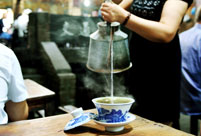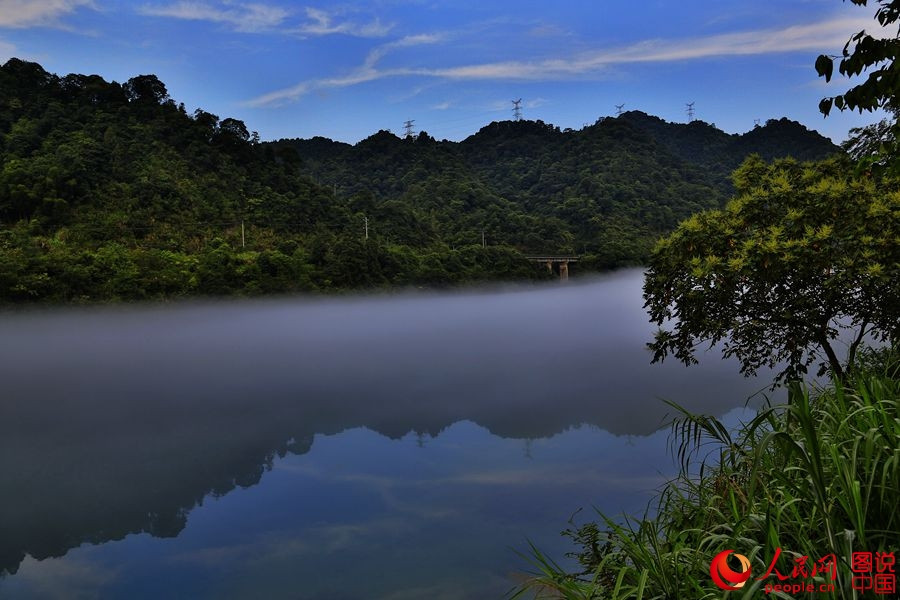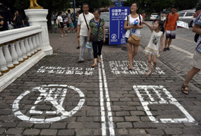 Breathtaking scenery in Redstone Park in SW China
Breathtaking scenery in Redstone Park in SW China
 Vintage cars show kicks off in London
Vintage cars show kicks off in London
 Gorgeous scenery in NE China
Gorgeous scenery in NE China
 Picturesque Barkol grassland in Xinjiang
Picturesque Barkol grassland in Xinjiang
 Small Wild Goose Pagoda - A World Cultural Heritage Site along the Silk Road
Small Wild Goose Pagoda - A World Cultural Heritage Site along the Silk Road
 Maritime Silk Road Luxuries of the Han Dynasty
Maritime Silk Road Luxuries of the Han Dynasty
 Ciao! Chinese beauties!
Ciao! Chinese beauties!
 An eye feast: BFA freshmen registration
An eye feast: BFA freshmen registration
 Top 10 most lavish weddings
Top 10 most lavish weddings
 Most amazing chi-pao beauties
Most amazing chi-pao beauties
 |
| Shaolin Kungfu |
"People's respect for religion diminishes when they're made to buy a ticket," said Wei Dedong, a professor of Buddhist studies at Renmin University.
Wei's comment comes in reaction to a dispute involving the famed Shaolin Temple in Dengfeng, Henan Province and local government department over withheld ticket revenue.
The 1,500-year-old temple filed a lawsuit last year for 50 million yuan ($8.14 million) in held revenues against Songshan Scenic Area Management Committee, the government body that manages the ticketing.
The committee, which also oversees other scenic spots on the sacred Songshan Mountain, made a deal with the monastery in 2009 to share 30 percent of every 100-yuan entrance ticket to the scenic area.
In return, Shaolin allowed free use of the name "Shaolin" by China National Travel Service (Dengfeng) Songshan Shaolin Cultural Tourism Co., Ltd, which was co-founded by the local State-run tourism organization and the China Travel Service Group Cooperation.
But insiders claim Shaolin did not have a choice in the matter.
"Shaolin Temple was not consulted in the cooperation between the government and the company," a source close to the temple's abbot was quoted by Nandu Daily as saying.
While there is no set trial date, the case has attracted widespread attention among the public over the commercialization and management of Chinese temples.
Karma, Inc.
In recent years, monasteries, which claim to stay clear of secular commercial activities and call for free admission for believers and tourists, are often forced into projects promoted by the government.
A total of 29 temples in Hunan Province stopped charging admission in 2013 in a bid to resist commercialization, the Xinhua News Agency reported.
Panlong Temple in Kunming, Yunnan Province closed its doors on August 15 to protest a local government proposal to renovate the structures in the scenic area surrounding the temple, which included the construction of five exhibition halls in the monastery, Kunming-based Chuncheng Evening News reported.
A cultural investment company announced plans in 2012 to incorporate Famen Temple in Baoji, Shaanxi Province in preparation for a public offering. Authorities halted the plan.
The recent drive to develop religious centers as profit-making institutions by local governments has provoked considerable controversy.
"By depending partly on tourism to support the economy in China, the commercialization of monasteries is inevitable," Li Mingde, vice-chairman of the Beijing Tourism Association, told the Global Times.
All temples on Jizu Mountain in Binchuan county, Yunnan Province closed their doors in protest of a scenic spot developer during the 2014 Spring Festival. The temples accused the developer of hiking entrance fees, bundling tour bus fares with admission tickets and not waiving fees to Buddhists, the Yunnan Information Daily reported.
Binchuan county head A Zexin admitted that tourism has been an important industry for the county and Jizu Mountain is a main attraction for local tourism, Kunming-based Metropolis Times reported.
After Shaolin filed its lawsuit, the local government accused the temple of profit-seeking and "secularization." "Why is the temple asking for such a large amount of money?" an official asked, according to Nandu Daily.
Shaolin Temple sued the government after officials had invested more than 1 billion yuan to upgrade the surrounding area, experts pointed out.
"Asking for unpaid ticket revenue could just be the temple's excuse to terminate the contract and profit from the government's commercialization efforts," said Wei.
Shaolin Temple, occupying only 40,000 square meters, is located in the over 10,000-hectare forest park set up by the local government. The monastery said it had no say in being included as part of the scenic area.
But Wei explained some temples are succeeding in balancing business with their cultural and religious values, such as Lingshan Temple in Wuxi, Jiangsu Province.
If the government or development company approaches religious institutions with a respect for Buddhism and its doctrines, temples are willing to cooperate with developers, said Wei.
To fee or not to fee
Entrance fees for temples in the mainland were first instituted during the Cultural Revolution (1966-76), a time that all religious activities were prohibited, some buildings of worship were protected for their historical and cultural values.
Admission charges gradually become routine practice, Wei said.
Today, as temples and their surrounding areas are increasingly developed into scenic parks, ticket revenue provides a big boost for local governments.
Entrance to the scenic area surrounding Wutai Mountain, a sacred Buddhist site in Shanxi Province, costs 218 yuan during peak season. Compare that to the admission prices of temples on the mountain, which range between free and 15 yuan.
The developer and government pocket all revenue from those ticket sales to the scenic area without sharing with the temples, Wei said.
Master Yancan, vice-chairman of the Buddhist Association in Hebei Province, echoed Wei in saying that the majority of temples are self-sufficient and mainly survive on donations.
Temples do not allow themselves to exploit tourists and believers with expensive entrance fees as the essential role of temples is to provide a place for Buddhists to worship, he said.
Some argue that the business development of temples have done more damage than good.
Wei suggests a scheme to waive entrance fees of temples, saying all people have a right to share in Buddhist culture regardless of money.
At the same time, he also noted that temples with special cultural and historical value, such as the Yonghe Lama Temple in Beijing and the Potala Palace in Lhasa, should continue to charge tourists.
Admission schemes at such religious landmarks that accommodate both tourists and worshippers are also seen throughout the world, such as St. Paul's Cathedral and Westminster Abbey in London, he added.
 |
 Female bus driver drives Land Rover for commuting
Female bus driver drives Land Rover for commuting Top 3 iOS 8 features Chinese love most
Top 3 iOS 8 features Chinese love most Century-old public bath closes door in Beijing
Century-old public bath closes door in Beijing Teahouses in Chongqing: Worship to the leisure lifestyle
Teahouses in Chongqing: Worship to the leisure lifestyle Leading director Wang Quan'an detained for 'buying sex'
Leading director Wang Quan'an detained for 'buying sex' Heaven on earth: Dongjiang Lake in Hunan
Heaven on earth: Dongjiang Lake in Hunan Mixed reaction to smartphone sidewalk
Mixed reaction to smartphone sidewalk Amazing aerial photos of China's Xisha Islands
Amazing aerial photos of China's Xisha Islands Top 10 world's highest-paid models 2014
Top 10 world's highest-paid models 2014 Lingerie show at 2014 Miss China
Lingerie show at 2014 Miss China Songstress Li Xianglan dies at 94
Songstress Li Xianglan dies at 94 Police recruiting posters
Police recruiting posters Anshun Daxi- Living fossil of Chinese drama
Anshun Daxi- Living fossil of Chinese drama Urban farmers in China
Urban farmers in China 'Firepower-2014 Weibei'military exercise
'Firepower-2014 Weibei'military exerciseDay|Week|Month